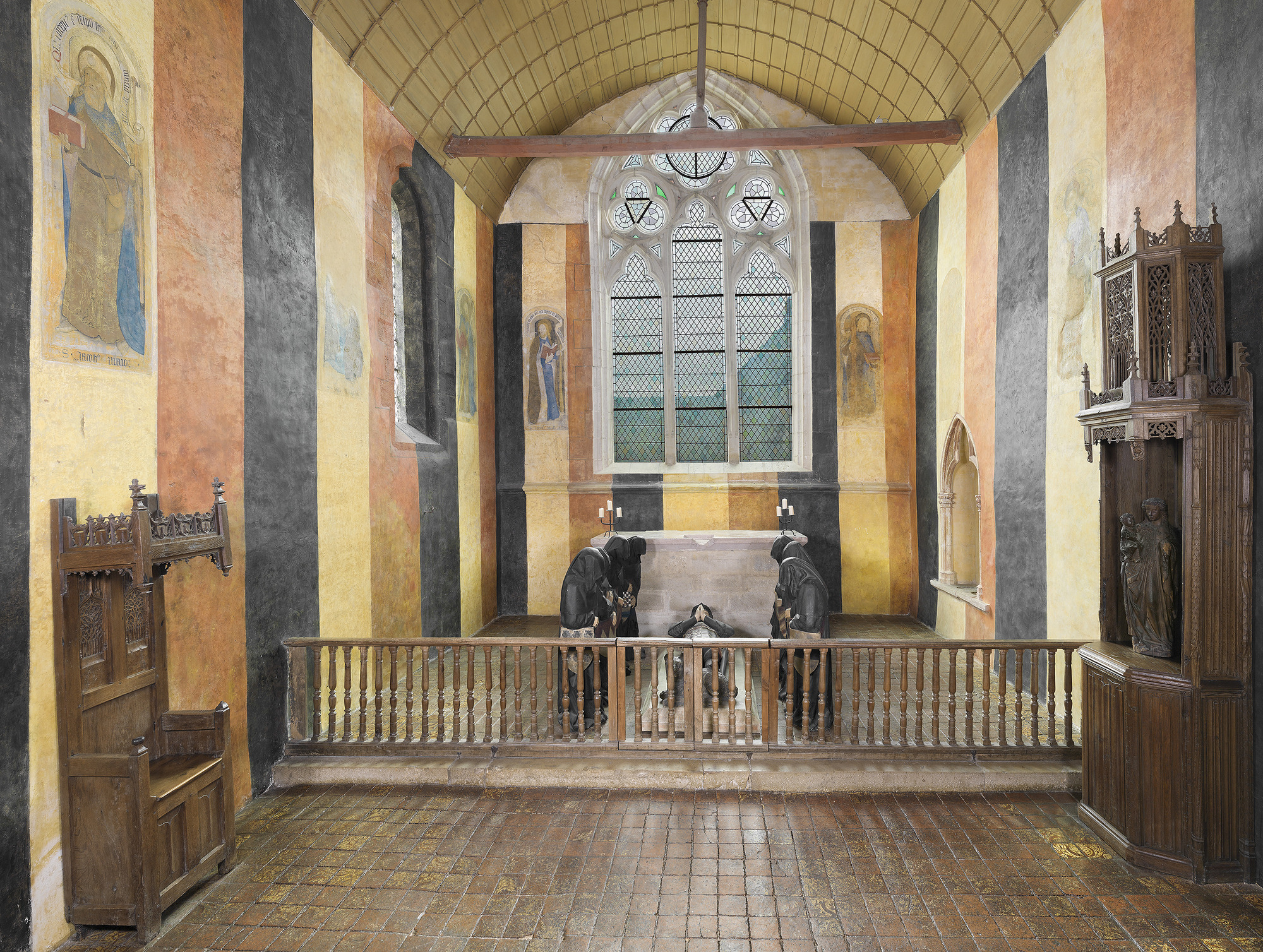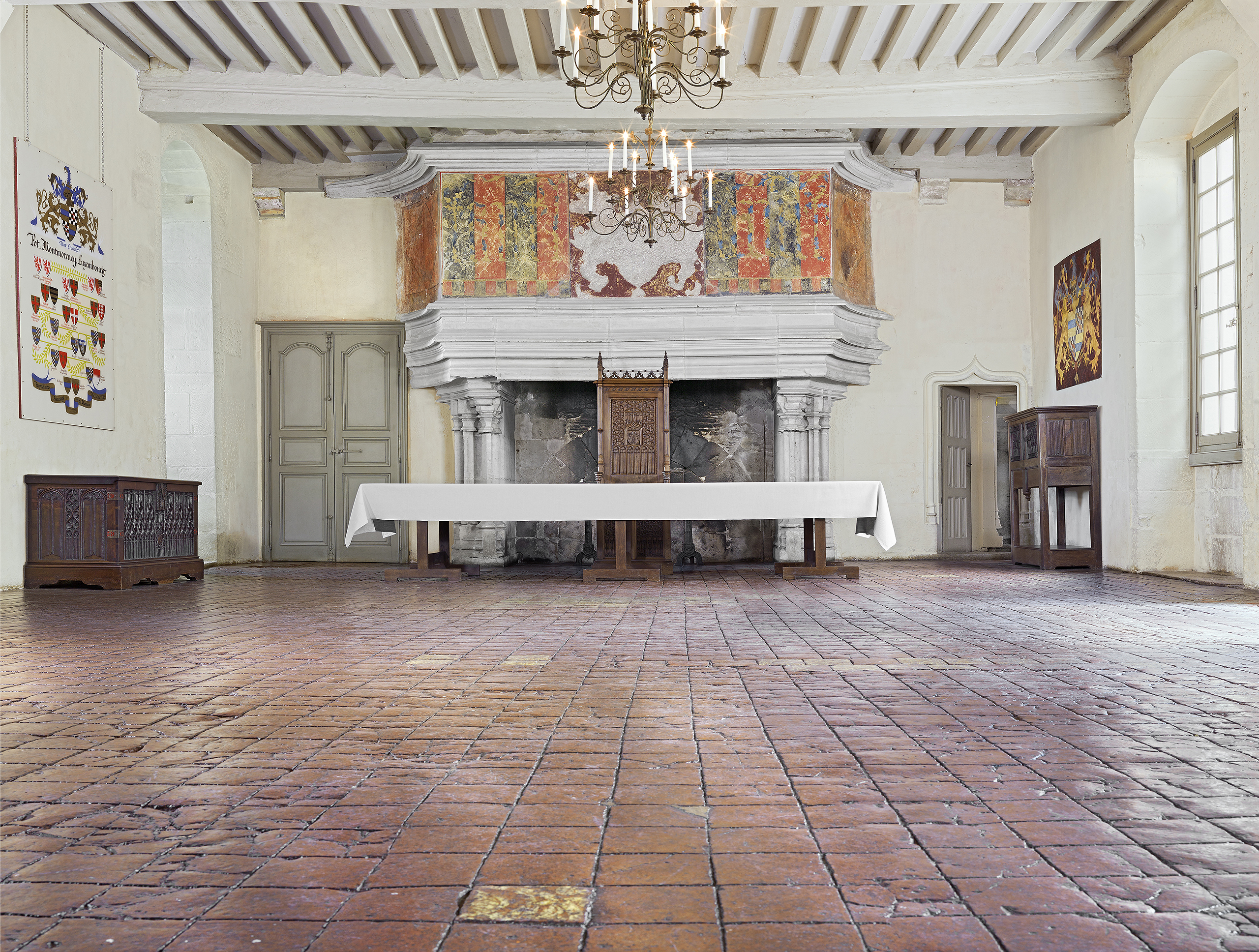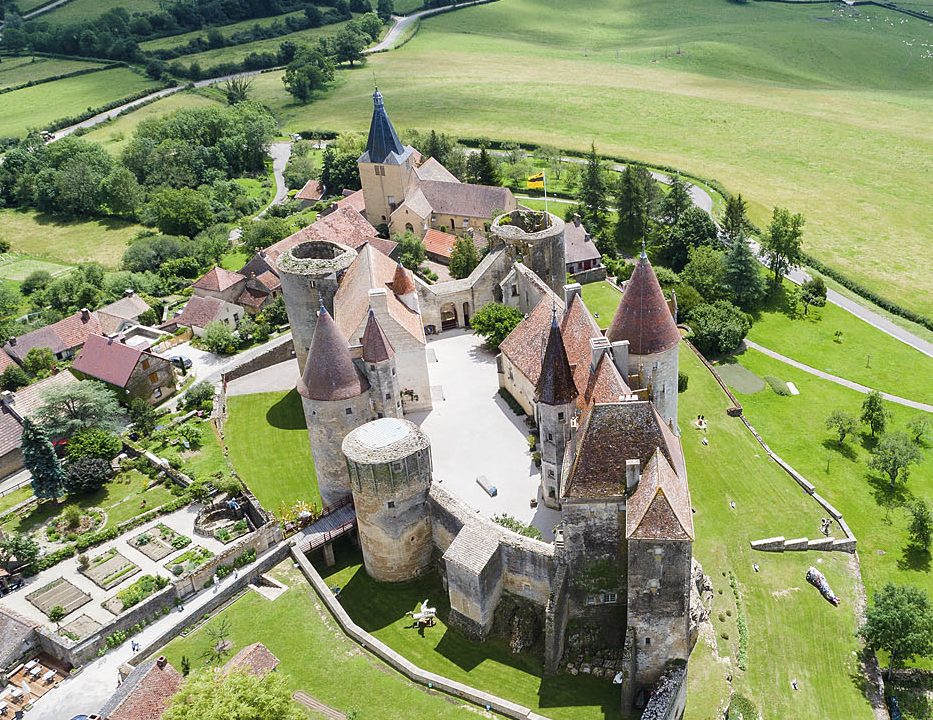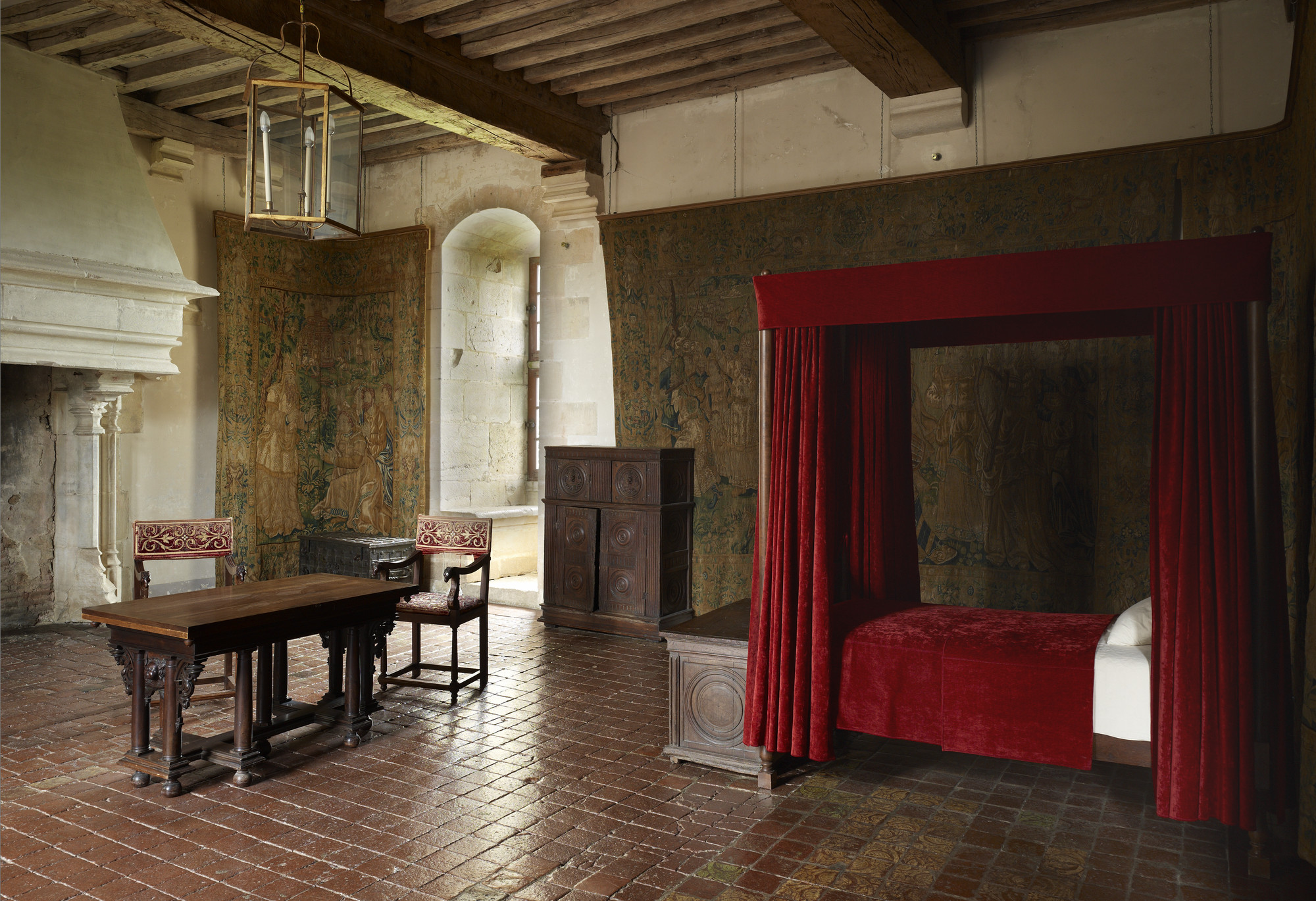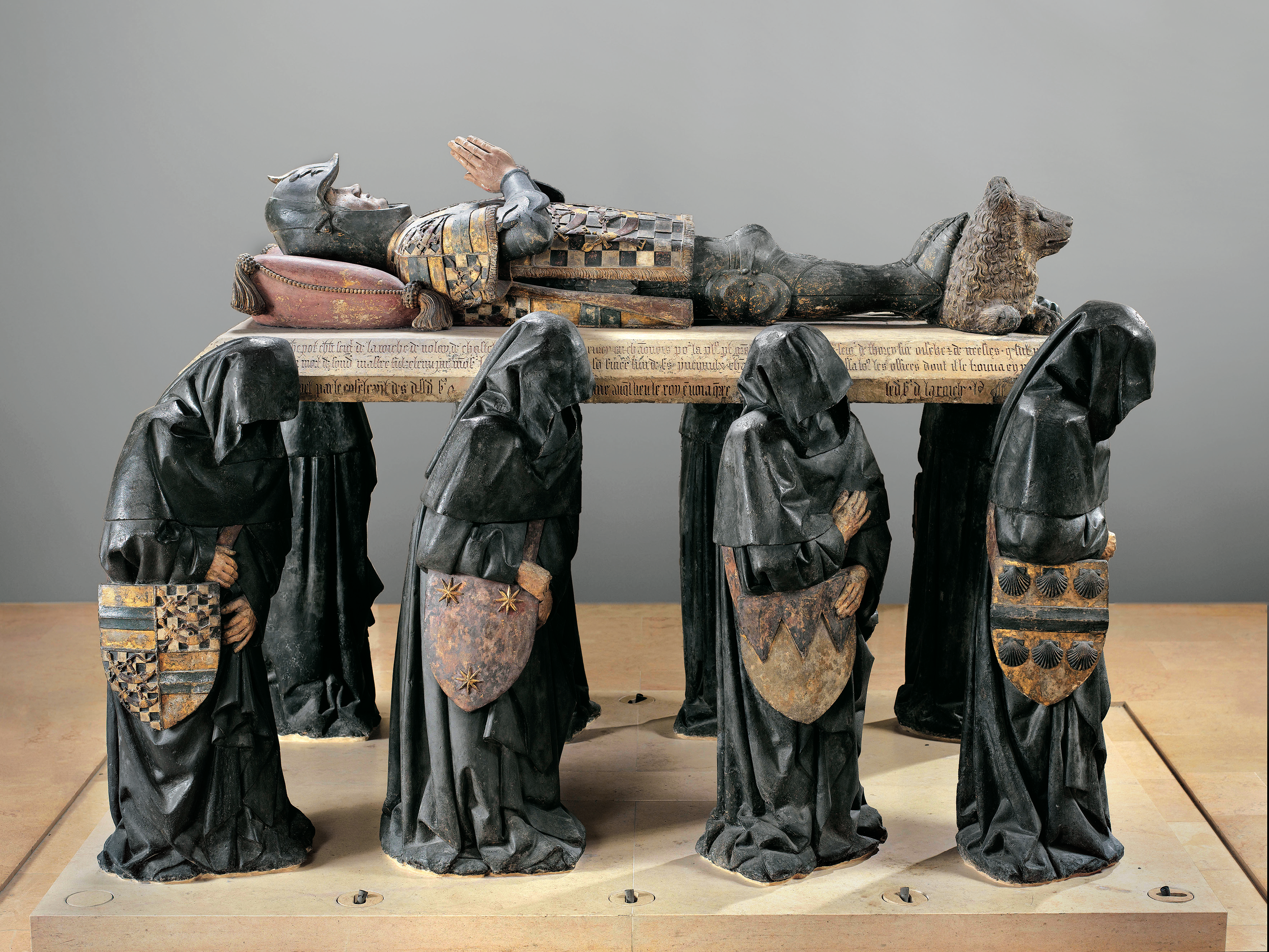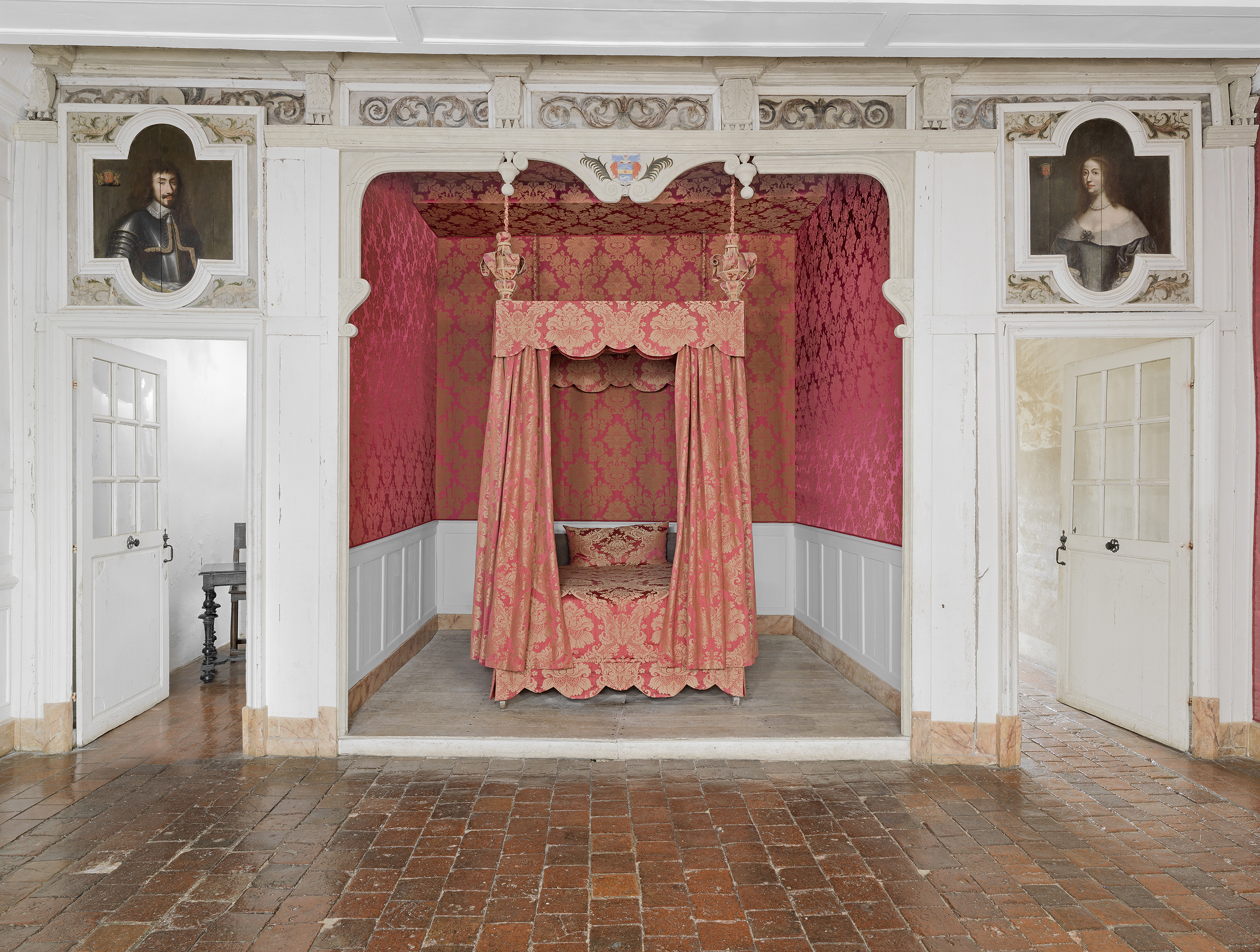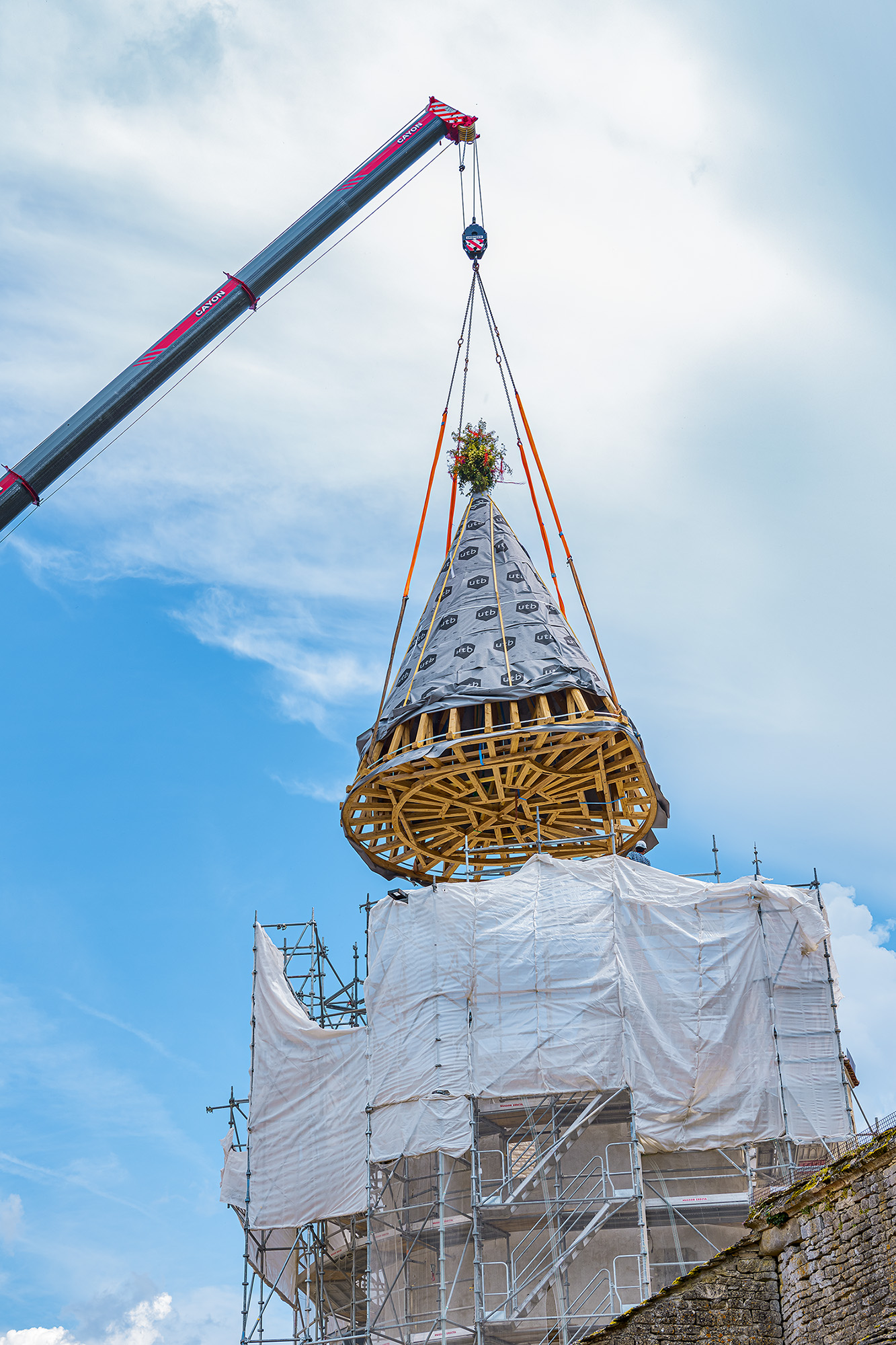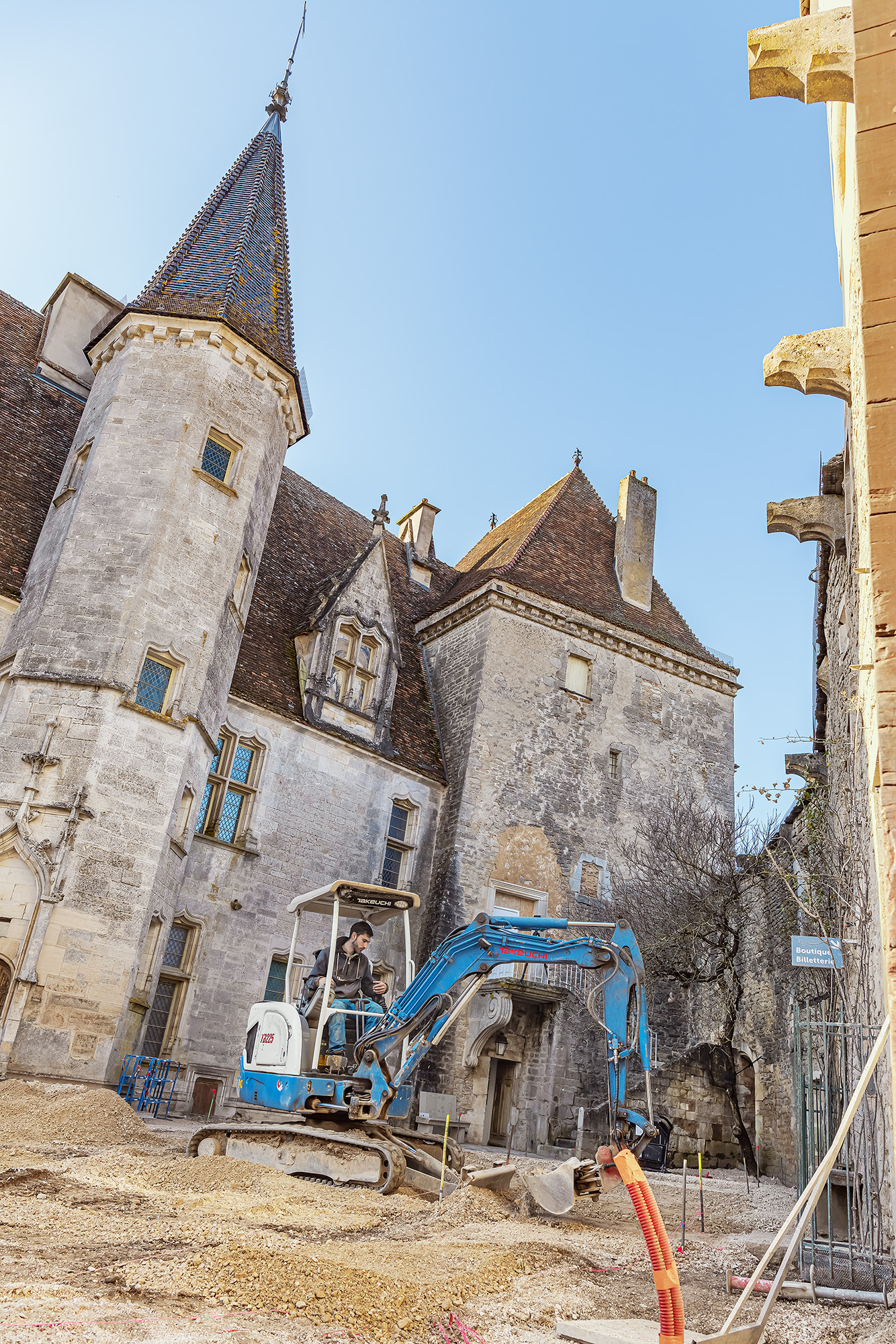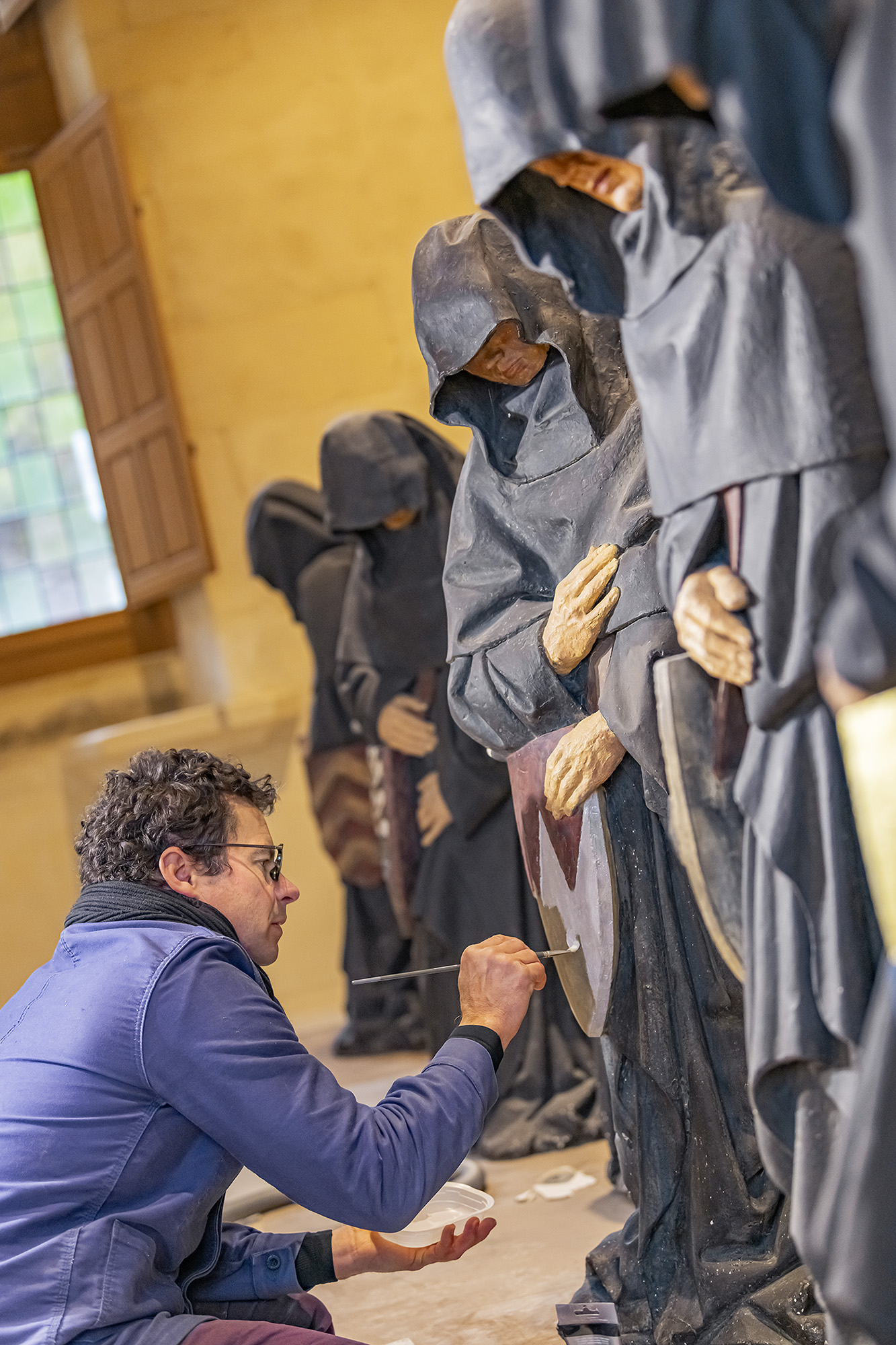History
1150 – 1175 Foundation of a fortress called Châteauneuf
It was held by Jean de Chaudenay, the youngest son of the Lord of Chaudenay, who owned the place at that time. The seat of this seigniory was a few kilometres from Châteauneuf.
1181 – 1457 The Seigniory of Châteauneuf
Jean de Chaudenay took the name of Jean 1st of Châteauneuf. We don’t know what the fortress looked like back then.
1457 Philippe Pot’s Estate
Philippe Pot became owner of the castle in 1456, on the will of the Duke of Burgundy, Philippe le Bon. His family ran the estate until 1533. He would bring many exceptional conversions that are still visible today.
1533 The Montmorency Estate
Châteauneuf passed through marriage to the great Montmorency family.
The ceilings of the Grand Logis were redone.
1627 The Vienne Estate
In 1627, Charles de Vienne and Marguerite de Domprel bought Châteauneuf.
1766 The purchase of Montmartel by the Paris Family
This family of Parisian bankers owned estates all over France but went bankrupt before the Revolution.
1782 The purchase by the Marquis d’Antigny
The Marquis d’Antigny had Châteauneuf returned to local hands: his eponymous castle was located a dozen kilometres away as the crow flies.
1811 – 1936 The property of Vogüé
The castle passed through marriage to the great Vogüé family.
1936 The castle became a public building
The Count Georges de Vogüé donated Châteauneuf to the State.
2008 The Burgundy-Franche-Comté Regional Council became the castle owner
2022-2024 Restoration work
The study and restoration phase is designed to enhance visitor experiences by introducing new activities and creating opportunities for contemporary artists to showcase their work.
For further information on the restoration efforts, please visit the restoration page (in french).
Events
(in french)
Pratical information
Leaflets
Discover or download the leaflets introducing the Châteauneuf Castle.


